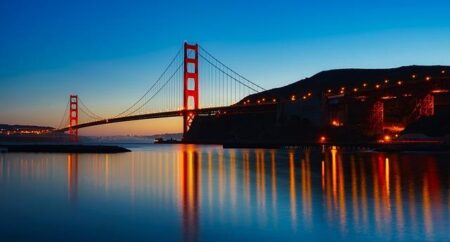San Francisco’s Transformation: Unveiling the Real Story Behind Its Urban Challenges
Decoding San Francisco’s Urban Challenges
Once celebrated as a beacon of creativity, diversity, and perseverance, San Francisco has encountered significant hurdles over the last twenty years. The city’s vibrant neighborhoods have gradually shown signs of strain, marked by fraying community bonds and growing economic inequality. This shift stems from a complex mix of soaring housing prices, the departure of middle-income households, rising crime statistics, and stretched public services. Together, these factors have undermined the stability and cohesion that once defined daily life in the city, leaving residents and enterprises uncertain about the future.
Primary drivers behind these urban difficulties include:
- Escalating housing expenses forcing longtime inhabitants to relocate to outlying suburbs.
- A surge in homelessness linked to inadequate social support systems.
- Budget constraints limiting upkeep and enhancements of communal spaces.
- Businesses closing or relocating due to safety concerns and evolving market conditions.
| Issue | Effect | Recent Trend |
|---|---|---|
| Housing Prices | Displacement of residents | Increased by 65% since 2000 |
| Homeless Population | More visible street encampments | Grew 40% since 2010 |
| Crime Rates | Rise in property and violent crimes | Up 20% since 2015 |
| Business Closures | Decline in retail and service diversity | Increased 30% since 2018 |
Policy Missteps and Their Consequences
The ongoing difficulties in San Francisco are deeply rooted in a series of policy shortcomings that have accumulated over time. Ineffective urban planning, inconsistent enforcement of housing regulations, and fragmented approaches to homelessness have all contributed to the city’s predicament. Political leaders have often favored immediate, visible wins over comprehensive, sustainable reforms, resulting in patchwork solutions that fail to address core issues. Resistance from local communities (NIMBYism) and bureaucratic delays have further hindered efforts to expand affordable housing, while some public safety reforms have unintentionally led to increased crime.
Moreover, the city’s inability to modernize policies in line with shifting demographics and economic trends has widened social inequalities. For instance, restrictive zoning laws have limited the development of high-density housing, exacerbating affordability problems for lower and middle-income residents. Simultaneously, elevated business taxes and regulatory complexities have dampened investment and economic vitality. The table below outlines key policy failures alongside their impacts:
| Policy Domain | Shortcoming | Resulting Impact |
|---|---|---|
| Housing | Restrictive zoning and slow permit processes | Severe shortage of affordable homes |
| Homelessness | Insufficient funding and fragmented programs | Growth in street homelessness |
| Public Safety | Uneven enforcement and policy shifts | Increase in property and violent crimes |
| Business Climate | High taxation and regulatory burdens | Slowed economic expansion |
Economic Evolution and Its Impact on San Francisco’s Character
San Francisco’s shift from a predominantly working-class city to a global technology powerhouse has dramatically reshaped its social and economic fabric. The tech boom, ignited in the late 1990s, attracted a flood of venture capital and highly skilled professionals, transforming the city’s workforce and housing market. This influx has driven up real estate values and living expenses, creating a divide between established residents and new arrivals. As traditional industries and small businesses have dwindled, the city’s once rich cultural mosaic has become more uniform, dominated by tech-driven economic forces.
- Housing Costs: Median rents have surged by over 75% since 2000.
- Tech Employment: Increased by 120% over the past two decades.
- Small Business Decline: Nearly 30% reduction in historically working-class neighborhoods.
This economic transformation has also led to cultural shifts, as longtime communities—including artists, blue-collar workers, and immigrant groups—face displacement or marginalization. The city’s identity, once defined by grassroots activism and diversity, is increasingly shaped by innovation districts and corporate campuses. Balancing economic growth with inclusivity remains a critical challenge as San Francisco charts its path forward.
| Year | Median Rent (USD) | Percentage of Tech Jobs | Small Business Closures (%) |
|---|---|---|---|
| 2000 | 1,200 | 15% | — |
| 2010 | 2,100 | 40% | 12% |
| 2023 | 2,950 | 65% | 30% |
Pathways to San Francisco’s Renewal
Reviving San Francisco requires a comprehensive strategy that blends economic revitalization with strengthened community support. City officials are increasingly prioritizing sustainable urban growth and enhanced public safety to rebuild trust among residents and businesses. Key initiatives include:
- Supporting tech startups focused on social impact and community benefits
- Expanding affordable housing developments to combat homelessness
- Improving public transit infrastructure to boost accessibility and reduce congestion
- Investing in community policing and training to foster safer neighborhoods
Public-private collaborations have become vital in driving these efforts, pooling resources and innovation to accelerate progress. The following table highlights major focus areas alongside anticipated results over the next five years:
| Focus Area | Initiative | Expected Outcome |
|---|---|---|
| Housing | Development of affordable units and rental assistance programs | 20% decrease in homelessness |
| Economic Growth | Grants for tech innovation and social enterprises | 15% increase in employment in key sectors |
| Public Safety | Community policing initiatives and enhanced training | 10% reduction in crime rates |
| Transportation | Expansion of bus routes and bike lanes | 25% improvement in average commute times |
Conclusion: San Francisco’s Complex Journey Forward
San Francisco’s narrative is one of intricate challenges and contradictions—a city wrestling with its evolving identity amid rapid transformation. As explored in “What Happened to San Francisco, Really?”, grasping the city’s current state demands a deep dive into the intertwined social, economic, and political forces shaping its trajectory. While the path ahead is uncertain, the city’s resilience and innovative spirit remain its greatest assets. The future of San Francisco hinges on its ability to confront entrenched issues while preserving the unique character that has long made it a symbol of possibility and progress.




